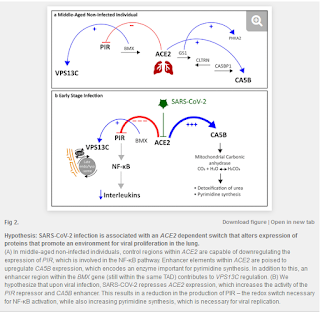Aquaporins and radiation(?)
The specific strategy we adopted is depicted in Fig. 1. This strategy was based on the understanding of salivary fluid secretion and salivary duct cell physiology available in 1991 (Baum 1993). In this figure, a surviving duct cell in an IR-damaged salivary gland is illustrated. We hypothesized that it would be possible for this cell to secrete fluid through the transfer of a gene encoding a functional, non-polarized water channel protein. Our hypothesis included a view that the duct cells could generate an osmotic gradient, lumen > interstitium, in the absence of any significant acinar cell secretion and the expression of a water channel in these normally water impermeant cells would in turn permit osmotically driven transepithelial fluid flow into the lumen. The specific hypothesis, in brief, is as follows. In the absence of an isotonic acinar cell secretion, most of the membrane transport proteins then-known to be present in the duct cell luminal membrane would be inactive owing to the low luminal concentrations of their respective substrates; these include the epithelial sodium channel, the cystic fibrosis transmembrane conductance regulator (i.e., a chloride channel) and the sodium/proton exchanger. However, a potassium/proton exchanger in the luminal membrane would be active and able to exchange intracellular potassium for a proton that could be generated in the lumen from the dissolution of CO2 in the small amount of diffused water that normally should be present. The CO2 would dissociate to yield the exchangeable proton and HCO3−, resulting in a KHCO3 osmotic gradient. As shown, the cDNA for hAQP1 has been transferred and it assumes a non-polarized distribution all around the plasma membrane. Water then would be able to flow across the duct cell into the lumen in response to the hypothesized KHCO3 gradient. It is important to recognize that this hypothetical mechanism is still unproven, but the gene transfer strategy, as is presented below, has been successfully utilized in small and large animal pre-clinical models."
What prompted the search for information on the effects of radiation was the finding that radiation therapy can improve outcomes in severe COVID-19 (references below) and of course I am wondering about the specifics of the mechanism of action. Presumably radiation induces a change in immune cell function - but how, exactly, is the change mediated?
I suspect aquaporins may be involved. The role of aquaporins in inflammation is reviewed here:
Meli, Rosaria, Claudio Pirozzi, and Alessandra Pelagalli. “New Perspectives on the Potential Role of Aquaporins (AQPs) in the Physiology of Inflammation.” Frontiers in Physiology 9 (2018): 101. https://doi.org/10.3389/fphys.2018.00101.
"Further data supports these findings showing that Th2 cytokines and
IL-4, both involved in mucin gene expression, are down-regulated in AQP5
knockout mouse (Karras et al., 2007),
thus suggesting the contribution of this channel protein in effective
Th2-driven responses to allergens. More recently, the relationship
between the AQP5 deletion and elevated IFN-α and IL-2 production was
evidenced, indicating that this protein acts in the shift from Th2
toward Th1 response in a murine model of mucous hyperproduction during
antigen-induced airway inflammation (Shen et al., 2011).
It is well-known that Th2 cytokines operate in these pathologies with
different mechanisms such as eosinophil recruitment, airway
hyper-responsiveness and mucus hypersecretion (Tomkinson et al., 2001; Walter et al., 2001)"
{ This paper has a lot of references to papers by Medzhitov which I need to read ... }
No answer as yet, though, on what exactly radiation does to aquaporins ...
_______
References on COVID-19 radiation therapy:

Comments
Post a Comment